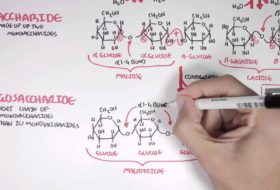Diastole is defined by the following characteristics:
- Diastole is when the heart muscle relaxes.
- When the heart relaxes, the chambers of the heart fill with blood, and a person’s blood pressure decreases.
Systole is defined by the following characteristics:
- Systole is when the heart muscle contracts.
- When the heart contracts, it pushes the blood out of the heart and into the large blood vessels of the circulatory system. From here, the blood goes to all of the organs and tissues of the body.
- During systole, a person’s blood pressure increases
To pump the blood around the body, the heart contracts and then relaxes over and over again in a cycle called the cardiac cycle. The cycle begins when the two atria contract, which pushes blood into the ventricles. Then, the ventricles contract, which forces the blood out of the heart.
The deoxygenated blood that comes back from the body to the right side of the heart is then pumped through the lungs where it picks up oxygen. The oxygenated blood then travels to the left side of the heart and is pumped to the rest of the body.
Diastole and systole affect a person’s blood pressure differently, as follows:
- When the heart pushes blood around the body during systole, the pressure placed on the vessels increases. This is called systolic pressure.
- When the heart relaxes between beats and refills with blood, the blood pressure drops. This is called diastolic pressure.
When a person receives their blood pressure results, they will see two numbers that represent the diastole and systole measurements. These measurements are given as millimeters of mercury (mm Hg).
The first number is the systolic pressure and the second is the diastolic pressure.
According to the American College of Cardiology’s (ACC) updated 2017 guidelines, the current blood pressure categories are:
- Normal blood pressure: under 120/80 mmHg
- Elevated blood pressure: a systolic pressure of between 120-129 and a diastolic pressure of under 80
- Stage 1 hypertension: a systolic pressure of between 130-139 or a diastolic pressure of between 80 and 89 mmHg
- Stage 2 hypertension: a systolic pressure of at least 140 or a diastolic pressure of at least 90 mmHg
These updated guidelines are likely to place 46 percent of Americans in the category of having high blood pressure.
Blood pressure is always measured when the person is at rest and over several days. Its measurements are also called blood pressure readings
High and low blood pressure
A person’s blood pressure can become too high or too low for many reasons. Both high and low blood pressure can cause serious health consequences if left untreated.
High blood pressure
Gender and age may increase a person’s risk of high blood pressure.
High blood pressure or hypertension is when a person has abnormally high pressure against the walls of their blood vessels. This condition develops gradually over many years and may go unnoticed for a long time, as there are often no symptoms.
The following risk factors increase a person’s risk of high blood pressure:
- Age. Blood pressure is usually higher with age.
- Gender. Men are more likely to have high blood pressure before the age of 55, but women are more likely than men to have the condition after the age of 55.
- Race. High blood pressure is more common in African Americans than Caucasian or Hispanic Americans.
- Family history. Having a family member with high blood pressure increases the risk of a person developing high blood pressure in the future.
- Obesity. A person who is overweight or obese is more likely to develop high blood pressure. This is because a higher volume of blood circulates through blood vessels to supply the cells with oxygen and nutrients. Because there is more blood circulating, there is a higher pressure on the vessel walls.
- Lifestyle habits. A lack of physical activity, smoking tobacco (including second-hand smoking), drinking too much alcohol, consuming too much salt (sodium) or too little potassium, and stressmay increase the risk.
- Certain chronic conditions. Kidney disease, diabetes, and sleep apnea can increase the risk of high blood pressure.
- Pregnancy. In some cases, pregnancy can cause high blood pressure.
When left untreated, high blood pressure can cause complications and, eventually, serious health problems, such as:
- Heart attack. A block in the flow of oxygen-rich blood to a portion of the heart, preventing that portion of the heart from getting oxygen.
- Stroke. A stroke happens when there is a block in the flow of oxygen-rich blood to the brain, preventing that portion of the brain from getting oxygen.
- Heart failure. Failure of the heart to pump enough blood to meet the body’s demands, caused by the increased pressure on the vessels.
- Peripheral artery disease. This is the narrowing of blood vessels other than those that supply the heart or the brain, most commonly of the legs. Blood flow to that part of the body is affected.
- Aneurysm. An aneurysm is the development of an abnormal bulge in a blood vessel wall, which may press on other organs, block blood flow, or eventually burst.
- Chronic kidney disease. Kidney disease can be caused by narrowing of blood vessels in the kidneys, which prevents them from working properly.




